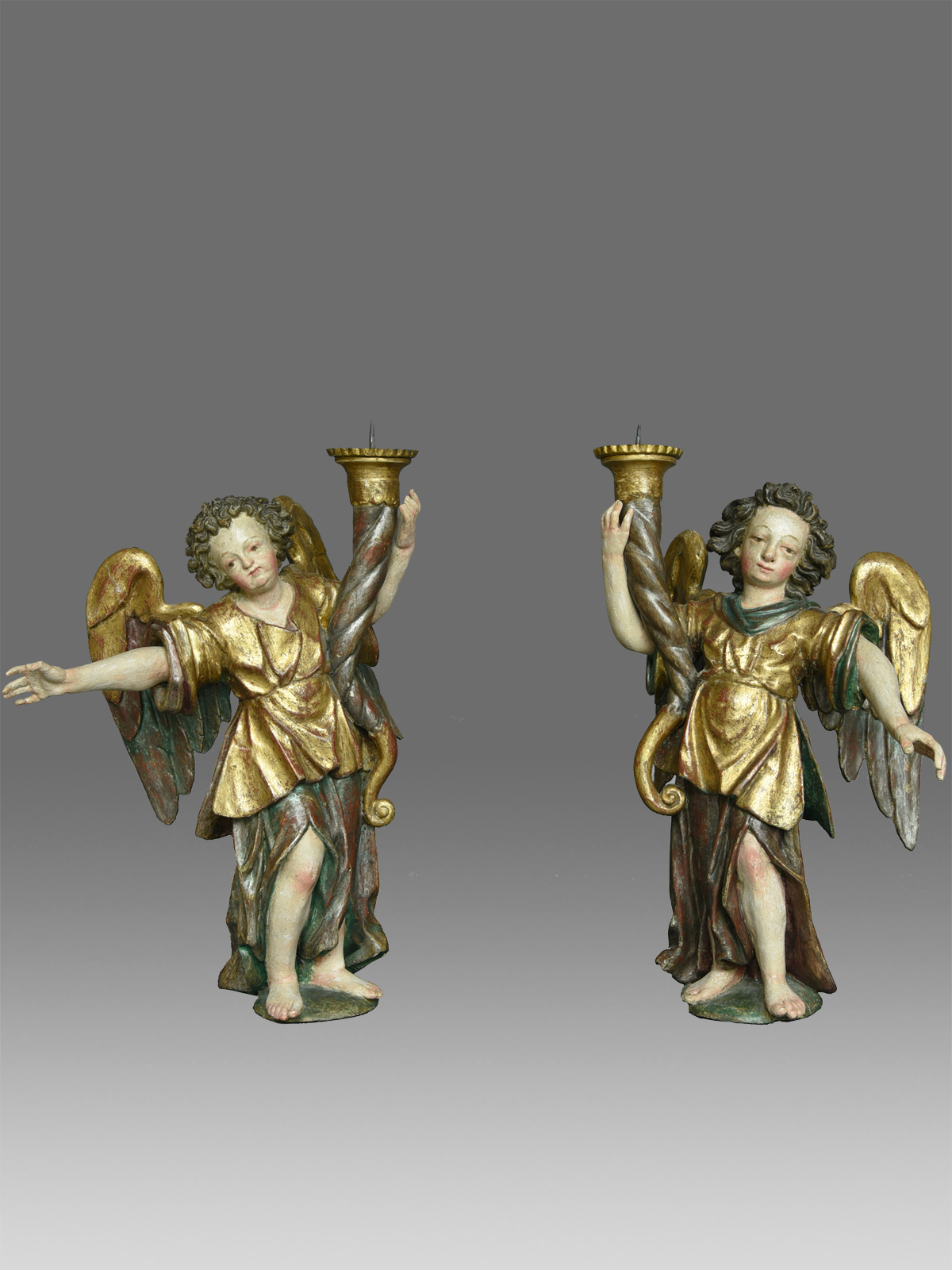Guggenbichler angel couple
Origin
Upper Austria / Salzkammergut
Age
around 1680
Size
47.5 cm x 24.0 cm
Previous owner
Rhenish private collection
Description
JOHANN MEINRAD GUGGENBICHLER
Purchase of old Gothic sculptures in Munich
born 1649 Einsiedeln/ Switzerland – died 1723 Mondsee (Upper Austria)
Johann Meinrad Guggenbichlerwas an outstanding Baroque sculptor. After the death of his father, who worked as a stone sculptor and master builder, Johann Meinrad continued his training as a sculptor with his brother Johann Michael Guggenbichler in Dillingen, Bavaria. Here he perfected his craft and developed an unmistakable style that made him one of the most sought-after artists of his time.
Sale of old baroque sculptures in Munich
From as early as the 1670s, Guggenbichler created impressive altars, church furnishings and sculptures for important churches and monasteries in Austria and Bavaria. His best-known works include the altars in the collegiate church of St. Florian near Linz and in the churches of Straßwalchen, Mondsee Monastery, Irrsdorf, St. Wolfgang and Oberwang. His works are characterized by detailed carving and a harmonious combination of artistic sophistication and religious symbolism.
Guggenbichler’s works are characterized by the masterful use of wood, often polychromed and gilded. Its altars and sculptures reflect the Baroque splendor and spiritual depth of the era and are still important examples of sacred art today.
Purchase of old sculptures in Munich
Johann Meinrad Guggenbichler left behind a rich legacy that remains alive in the churches and monasteries that house his works. His artistry and his contribution to Baroque sculpture make him a central figure in the history of religious art in the Baroque period. 17. and 18th century.
Standing candlestick angels:
Sale of old sculptures specialty store in Munich
Mondsee/ Upper Austria, date of origin around 1680
Two carved angels made of lime wood, which were painted in polychrome and gilded, are a particular example of his artistry.
The angels stand upright and each hold a candlestick, whereby the original version has largely been preserved, only some parts have been omitted.
These sculptures embody Meinhard Guggenbichler’s typical Baroque combination of spirituality and splendor, which was sought after in ecclesiastical art of the time.
Purchase of old sculptures in Munich
Provenance: Private collection Rhineland

